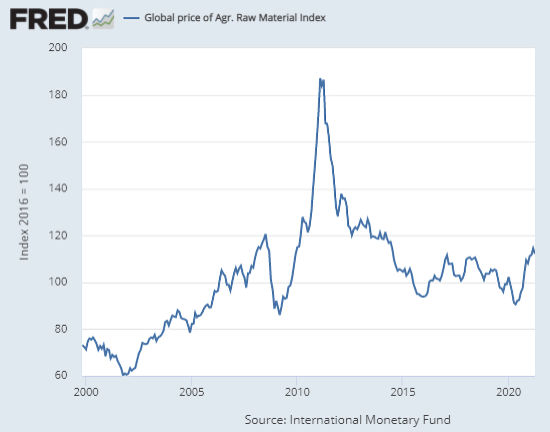Inflation tends to arrive in 3 stages:
Stage 1
The first stage is the price manufacturers pay for their raw materials. This can be tracked in a variety of ways including the Global Price of Agrigated Raw Materials published by the St. Louis Federal Reserve. Interestingly, raw materials prices peaked in February 2011 at 187.2 and then fell steadily over the next 4 years. Prices stabilized for a few years before plummeting due to COVID. Since then raw materials prices have spiked sharply. But are still nowhere near 2011 levels. One of the reasons for the sharp spike in 2011 was serious flooding causing massive crop loss driving the price of four basic crops (wheat, rice, corn, and soybeans) much higher while heavy rains in Colombia drove up coffee prices. This combined with a shortage of “rare earth materials” due in part to a Chinese chokehold on the supply of rare earth metals like neodymium, a “rare earth” necessary for products including smartphones, headphones, and hybrid electric cars. For instance, producing a Prius requires roughly 2.2 pounds of neodymium. All of these factors combined to create the “perfect storm” for raw materials prices.
From 2016 through the COVID trough in 2020 raw materials prices stair-stepped down but have since spiked upward again.



Leave a Reply